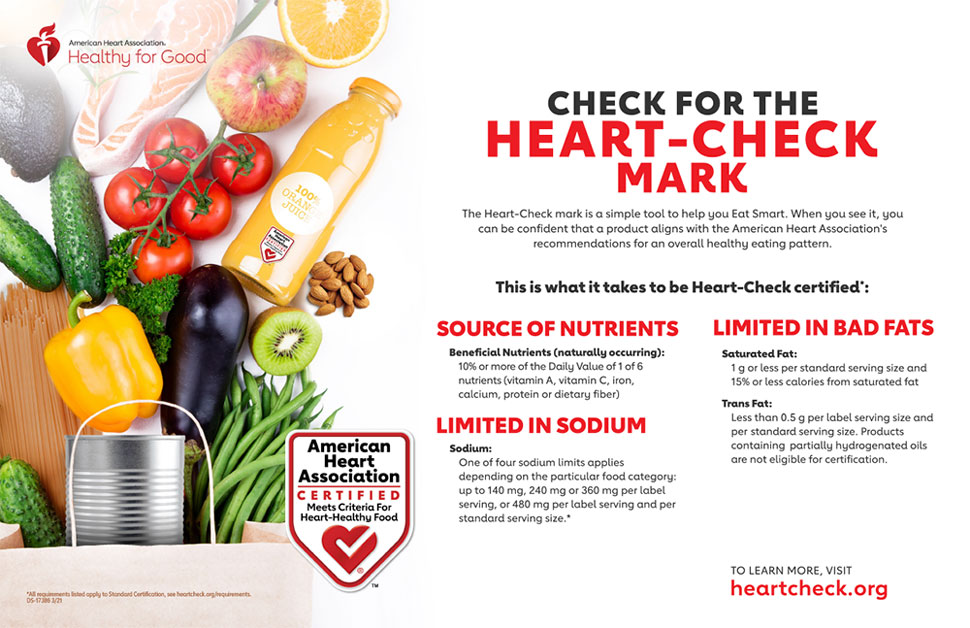
The Mediterranean diet encourages a high intake of vegetables and eats meat only occasionally. You can prepare meat in many different ways, including with sauces made with extra virgin olive oils. The Mediterranean diet also avoids processed meats and relies heavily on fresh ingredients rather than packaged products. The diet allows dairy products such as yogurt, cheese, and fish to be consumed up to two times per week. The Mediterranean diet doesn't rely on processed or packaged foods.
The Mediterranean diet also focuses on plant-based proteins. Numerous studies show that nuts and seeds may help lower your chances of getting cancer. A large part of the Mediterranean diet is vegetables. A daily average serving of green leafy vegetable is one cup. You can find vegetables such as broccoli, cauliflower and spinach. Other common ingredients include raw, grilled, and raw.
Tomatoes play an important part in the Mediterranean diet. They are low in fat, and high in fiber. Mediterranean meals include moderate amounts of red wines, which can enrich the taste and texture of your meals. It is a fantastic way to increase your fiber/protein intake while still enjoying the flavors of a meal. Red wine is also allowed in the Mediterranean diet. This can be an enjoyable way to spend a night on the town.

Your meals should consist mainly of vegetables. Mediterranean diet calls for seven to ten servings per day of fruit and vegetable, with three to five servings each day of vegetables. Antioxidants are found in fruits and vegetables, which can help lower your chances of getting heart disease. Make sandwiches with spinach and cucumber. You can also use sliced cucumbers.
Mediterranean eating includes many plant-based food options. Olive oil is the most common source of additional fat. The Mediterranean diet allows for moderate amounts of red meat. However, you might need to limit your intake to one serving per day. Limiting alcohol intake to just one or two drinks per day is a good idea. Nevertheless, red wine is allowed in moderation.
Also, it is vital to get active every day. For the Mediterranean diet, you need to do at least two hours of moderate exercise per day. Find activities that will make you feel happier and more energetic. Also, you can do aerobic chores like yardwork or housework. For people with busy schedules, the Mediterranean diet is an excellent choice for many reasons. It will provide the energy you need, and it will prevent you from feeling tired or depressed.
The traditional Mediterranean diet also allows for a moderate amount of red meat. As both fish and chicken are excellent sources of lean protein, the Mediterranean diet is primarily focused on them. Red meat is not allowed. You should choose lean cuts of meat. This will reduce your chance of getting heart disease. The meat should only contain 90% lean and 10% fat.

The Mediterranean diet allows for lean meats in addition to fish. The Mediterranean diet is high in fish, and it is essential to know which fish are safe for your health. Seafood Watch offers information about Mediterranean fish, as well as the Mediterranean diet pyramid. It consists of olive oils, fruits and veggies, legumes, whole grains, olive oil, and nuts.
Eggs are an important part of the Mediterranean diet. Although meat was not a common food in the past (though eggs were a staple food in many Mediterranean countries) they were an excellent source of protein and were a popular choice. Even though it sounds extreme to some, eggs have been proven to be healthy and provide a lot of protein. The Mediterranean diet consists of fruits, vegetables, legumes, nuts, and olive oil, and is rich in fiber.
FAQ
What causes weight loss as we age?
How do you determine if your bodyweight is changing?
Weight loss occurs when there is less fat than muscle mass. This means that you must consume more calories than you use daily. Activity levels are the most common reason for weight loss. You can also lose weight due to stress, illness, pregnancy, hormonal imbalances and certain medications. If there is more body fat than muscle mass, then weight gain can occur. This happens when people consume more calories than they burn during the day. There are many reasons for this, including overeating and increased physical activity.
Our bodies lose weight because we eat fewer calories than we burn. By exercising regularly, our metabolism rates increase which in turn burns more calories during the day. But, this does not mean that we will be thinner. It is important to know if we are losing weight or gaining muscle. If we're burning more calories than we're consuming then we're going to lose weight. But, if we consume far more calories than what we burn, then we actually store them as fat.
As we age we tend to be slower in moving and thus we don't move nearly as much. We also tend eat less than we used to. We tend to gain weight. On the flip side, we tend to have more muscle mass so we look bigger than we really are.
Without weighing yourself each week, there is no way to know how much weight you have lost. There are many ways you can measure your weight. You can gauge your waist size, hips, hips, thighs and arms. Some prefer to use the bathroom scales, others prefer to use tape measures.
You can track your progress by weighing yourself at least once per week and measuring your waistline every month. You can also take photographs of yourself every few years to track how far your progress has been.
You can also look up your height, weight and body measurements online to determine how much you weigh. If you're 5'10' tall and weigh 180lbs, you'd likely weigh 180lbs.
What is the difference among a virus or a bacterium and what are their differences?
A virus is a microscopic organism which cannot reproduce outside of its host cell. A bacterium is a single-celled organism that reproduces by splitting itself in two. Viruses are small, around 20 nanometers in size. Bacteria are much larger, at 1 micron.
Viruses spread easily through contact with infected bodily tissues, such as saliva and urine, semen, vaginal secretions or pus. Bacteria are usually spread through direct contact with contaminated objects or surfaces.
Viral infections can be transmitted through skin cuts, scrapes and bites. They can also be transmitted through the eyes, nose, mouth, ears, rectum, and anus.
Bacteria can enter the body through wounds. They may also be introduced into our bodies through food and water as well as soil, dirt, dust, and animals.
Viruses and bacteria both cause illness. Viruses cannot multiply in their host cells. They infect only living cells, causing illness.
Bacteria can cause illness by multiplying in the body. They can even invade other parts of the body. They can even invade other parts of the body, which is why antibiotics are necessary to eradicate them.
What can I do to boost my immune system?
The human body consists of trillions of cells. Each cell works together to create organs and tissues that fulfill specific functions. When one cell dies, another cell replaces it. Hormones, which are chemical signals that allow cells to communicate with one another, enable them to do so. Hormones control all bodily functions, including growth, development, metabolism, immunity and immune system.
Hormones are chemical substances that glands secrete throughout the body. They travel through bloodstreams and act as messengers that control the function of our bodies. Some hormones can be produced in the body, while others may be made outside.
The release of hormones from a hormone producing gland into the bloodstream is the beginning of hormone production. Once hormones have been released, they travel through the body until reaching their target organ. Some hormones may only remain active for a limited time. Others hormones are more active and have a longer life expectancy. They can still influence the body's functions long after they are eliminated from the bloodstream.
Some hormones can only be produced in large quantities. Some hormones are produced in large quantities.
Some hormones are only produced at certain times in your life. Estrogen is one example. It's produced in puberty, pregnancy and menopause. Estrogen aids women in developing breasts, maintaining bone density and preventing osteoporosis. It promotes hair growth as well as keeping skin soft and smooth.
What should my weight be for my age and height? BMI calculator & chart
The best way to determine how much weight you need to lose is to use a body mass index (BMI) calculator. The healthy BMI range for a healthy person is 18.5 to 24.9. To lose weight, you should aim for a loss of 10 pounds per year. To calculate your BMI, simply enter your height and weight into the BMI calculator.
This BMI chart can help you find out if or not you are obese.
Do I need to count calories
You might wonder, "What's the best diet for me?" or "is counting calories necessary?" It depends on many factors such as your current health, personal goals, preferences, and overall lifestyle.
The Best Diet For Me - Which One Is Right For You?
The best diet for me depends on my current health status, my personal goals, my preferences, and my overall lifestyle. There are many diets available, some good and others not so good. Some are better for certain people than others. What should I do? How can I make the right choice?
This article aims at answering these questions. This article begins with a brief overview of the various types of diets that are available today. After that, you will learn about the pros and disadvantages of each type. We'll then discuss how to choose which one is best for you.
Let's first take a look at different diets.
Diet Types
There are three main types, low fat, high protein, or ketogenic diets. Let's look at each one briefly.
Low Fat Diets
A low fat diet is a diet that restricts the amount of fats consumed. This is done by reducing your intake of saturated oils (butter, cream cheeses, etc.). You can replace them with unsaturated oils (olive oil and avocados) Low fat diets are often recommended to those who wish to lose weight quickly. This diet can cause problems such constipation as heartburn, indigestion, and even stomach pain. Vitamin deficiencies can also occur if the person doesn't get enough vitamins through their diet.
High Protein Diets
High protein diets reduce carbohydrates to favor of proteins. These diets typically have more protein than other diets. They are meant to help build muscle mass and burn more calories. However, they might not provide enough nutrition for those who need to eat frequently. They are not suitable for all people because they can be restrictive.
Ketogenic Diets
Ketogenic diets also go by the name keto diets. They are high in fat, moderately high in protein and low in carbohydrates. Athletes and bodybuilders use them because they allow them more time and harder training without feeling fatigued. They do require strict compliance to avoid any side effects like fatigue, headaches, nausea, and headaches.
What is the difference between sugar and fat?
Fat can be a source of energy that is obtained from food. Sugar is a sweet substance that can be found naturally in fruits or vegetables. Both fats as well as sugars contain the same amount of calories. But fats are twice as calories as sugars.
Fats are stored in the body and contribute to obesity. They may cause cholesterol buildup and lead to strokes or heart attacks.
Sugars are quickly absorbed and provide instant energy. This causes blood glucose to rise. High blood glucose levels can be dangerous because it increases the risk of developing type II diabetes.
Statistics
- This article received 11 testimonials and 86% of readers who voted found it helpful, earning it our reader-approved status. (wikihow.com)
- According to the 2020 Dietary Guidelines for Americans, a balanced diet high in fruits and vegetables, lean protein, low-fat dairy and whole grains is needed for optimal energy. (mayoclinichealthsystem.org)
- WHO recommends consuming less than 5% of total energy intake for additional health benefits. (who.int)
- nutrients.[17]X Research sourceWhole grains to try include: 100% whole wheat pasta and bread, brown rice, whole grain oats, farro, millet, quinoa, and barley. (wikihow.com)
External Links
How To
What does the term "vitamins" mean?
Vitamins can be described as organic compounds found in food. Vitamins help us absorb nutrients from foods we eat. Vitamins cannot come from the body so food must provide them.
There are two types of vitamins: water soluble and fat soluble. Water-soluble vitamins dissolve quickly in water. You can find vitamin C,B1 or thiamine, B2 or riboflavin and B3 or niacin, B3/niacin, B6/pyridoxine, folic Acid, biotin and pantothenic Acid as examples. Fat-soluble vitamins are stored in the liver, fatty tissue and kidneys. These include vitamin D, E and K, as well as beta carotene.
Vitamins are classified according to their biological activity. There are eight major categories of vitamins.
-
A - Vital for normal growth and maintaining good health.
-
C is important for nerve function and energy production.
-
D - essential for healthy bones, teeth, and gums.
-
E is necessary for good vision, reproduction.
-
K - Essential for healthy muscles and nerves.
-
P – vital for building strong bones.
-
Q - Aids digestion and iron absorption
-
R - Red blood cells are made from red blood cells.
The recommended daily allowance (RDA), for vitamins, varies depending upon age, gender, or physical condition. The U.S. Food and Drug Administration (FDA) sets the RDA values.
For adults aged 19 and older, the RDA for vitamin B is 400 micrograms daily. Pregnant women require 600 micrograms daily to support fetal development. Children ages 1-8 require 900 micrograms per day. For infants younger than one year, 700 micrograms are required daily. However, this number drops to 500 micrograms each day for children aged 9-12 months.
Children ages 1-18years who are obese need 800 micrograms per day while those who are overweight need 1000 micrograms per day and children who are underweight need 1200 micrograms per day to meet their nutritional needs.
2200 mg of vitamin A per day is required for children aged 4-8 who have been diagnosed by anemia.
2000 micrograms daily is required for adults over 50 to maintain their general health. Because of their higher nutrient needs, women who are pregnant or nursing need 3000 mg per day.
1500 micrograms is the recommended daily intake for adults aged 70+, who lose approximately 10% of muscle each year.
Women who have been pregnant or are lactating require more than the RDA. Pregnant women require 4000 micrograms daily during pregnancy, and 2500 micrograms every day after birth. Breastfeeding mothers need 5000 mg per day when breastmilk is being produced.